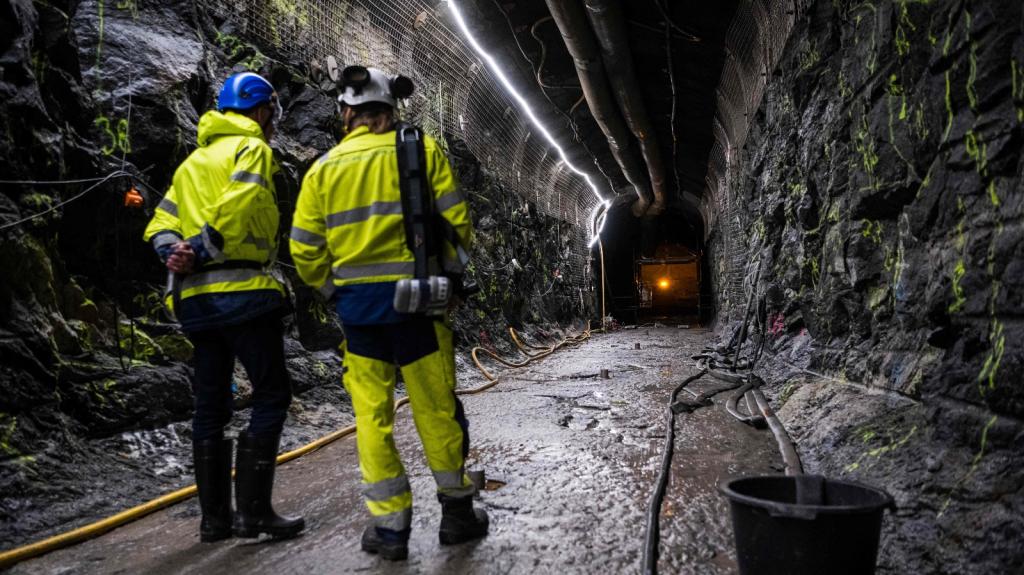
USGS Gas Hydrates LabMethane hydrate burning in a laboratory.
The right way to understand the potential of unconventional fuels like methane hydrates and tight oil is to closely examine their production rates and their prices. If these fuels can be produced at large scales and profitable prices, they very well might influence geopolitics and economics in the ways that Charles C. Mann speculates. If they cannot, then it truly doesn’t matter how much of those resources may exist underground and in the ocean floor.
Unfortunately Mann offers precious little data on price or production rates.
If Mann’s data on methane hydrates is correct, then Japan’s experiment so far has taken 10 years and $700 million to produce 4 million cubic feet of gas, which is worth about $16,000 at today’s U.S. gas prices, or about $50,000 at today’s prices for imported LNG in Japan. At this point, it is an enormously expensive experimental pilot project, and nothing more. We do not yet know when it might be able to recover commercial volumes of gas, or at what rate, or at what price. We have no reason to believe that if commercial quantities are recoverable by 2018 as Japan hopes — which seems incredibly optimistic — that the price of that gas will be competitive with imported LNG.
At the same time, we have numerous forecasts projecting that renewables like wind and solar will be competitive with fossil-fueled grid power in most of the developed world by 2020, including much of Asia. For example, a recent report by Citigroup, and another by researchers at Stanford University, among many others. A 2011 report by WWF and Ecofys projects that by 2018, solar PV will be the cheapest way to generate power in much of Asia. If these forecasts — based on more than a decade of real-world cost data for large-scale solar and wind — are correct, then there is no reason to believe that gas from Japan’s methane hydrate experiment will be able to compete with renewable grid power, which would constitute the largest market for that gas (unless Japan rapidly deploys natural gas vehicles in the interim, which it currently has no economic reason to do).
Mann also offers no data on tight oil production and price, but here are the key facts. In 2012, according to data from the U.S. Energy Information Administration, the U.S. consumed about 18.5 million barrels a day (mb/d) of liquid fuels and produced about 11 mb/d. Only about 7 mb/d of that 11 was actual crude oil, and about 1 mb/d of that was from tight oil. The non-crude liquids the U.S. produced have less energy content than crude, and some of it cannot be made into vehicular fuel.
One cannot easily make a case for incipient U.S. “energy independence” on the basis of 1 mb/d of new tight oil production. A host of dubious assumptions and data distortions underlie the recent energy independence forecasts which I will not delve into here, but I have examined and debunked most of the reports that Mann cites, including those from the IEA (here and here), Ed Morse at Citigroup (here and here), and Leonardo Maugeri.
The progressive substitution of expensive unconventional oil for cheap conventional oil is a fundamental reason why the global price of oil has tripled over the past decade, and will continue to rise. This essential concept — along with the correct definitions of “conventional” and “unconventional” — is lost in Mann’s treatment. It’s absolutely true that we will never “run out” of oil — there will always be oil resources that are too expensive to produce that will stay in the ground — but since 2004 we have seen the indisputable evidence that affordable oil is slipping away from us, and that the rising price of oil has contributed to the stalling of the global economy. If the world could tolerate $300 a barrel, there might be no reason for concern about future oil supply. But it cannot. As the IEA’s executive director recently noted, U.S. oil and gas prices need to go higher (through exports) to “avoid [the] shale boom turning to bust.” But prices for refined products like gasoline and diesel are already near the upper limit for American consumers.
The recent achievements from combining horizontal drilling with hydraulic fracturing are indeed impressive and have brought much-needed new volumes of liquid fuels to the thirsty U.S., which has long been the world’s largest oil importer. (Shale gas is likewise an impressive accomplishment, but the U.S. was still a net gas importer in 2012, according to EIA data.) But these are not new technologies. The first horizontal well was drilled in the 1930s, and hydraulic fracturing was introduced in the 1940s. Both technologies have been thoroughly applied and refined at scale in real-world circumstances for many decades, with substantial federal support for research and development.
Methane hydrate extraction, which is still in the early stages of testing and requires techniques that have only recently been attempted for the first time, is in no way comparable to tight oil and shale gas extraction. Methane hydrates are not “being developed in much the same methodical way that shale gas was developed before it,” and skepticism on methane hydrates isn’t comparable to skepticism on shale gas. Skepticism isn’t some fungible property of everything; facts about prices and production rates are essential.
Perhaps this is the real point of Mann’s take on these new technologies: He confesses that he does not want to “miss the boat” on methane hydrates as he did on shale gas. That’s a gambler’s mentality, not a shrewd investor’s.
Perhaps that is also why Mann chooses to perceive tight oil and methane hydrates through the lens of the peak oil debate, which occupies much of Mann’s 11,000-word exposition on the history of oil and gas production. His he-said, she-said treatment of the subject, attempting to portray it as a simple matter of differing opinions between “Hubbertians” and “McKelveyans,” gave far more credence to longtime and ardent peak oil critics like Verleger and Lynch, while characterizing the views of Campbell, Laherrère, and the “anti-fossil-fuel think tank” Post Carbon Institute as “not widely shared.”
If he had any real familiarity with their work, Mann would know that the latter group recognize the importance of fossil fuels while being deeply concerned about their future. He would also know that many other analysts and petroleum scientists have done serious and highly transparent research on the subject of peak oil, including Jeremy Leggett, a petroleum geologist and former faculty member of the Royal School of Mines in London; Olivier Rech, who was responsible for IEA’s petroleum forecasts from 2006 to 2009; dozens of independent analysts, petroleum engineers, and economists who publish at The Oil Drum; and petroleum scientists like Kjell Aleklett of Uppsala University, and Chris Skrebowski, a former long-term planner for BP and senior analyst for the Saudi Oil Ministry.
Mann’s caricature of the “Hubbertians” may make entertaining reading, but it does not refute their data, and while the assurances of people like Verleger and Lynch may be pacifying, they offer more vague assertions and rhetoric than data on production rates. The “Drill, Baby, Drill” report by petroleum geologist J. David Hughes that Mann derides (at shalebubble.org) is the most comprehensive and transparent assessment of U.S. tight oil and shale gas to date, and it offers a starkly different projection of the future of these fuels than their cheerleaders do.
Resources in the ground are one thing, but extraction is another matter entirely. And while production of fuels like methane hydrates may be technically possible, that does not mean that they will be affordable, or that their production will be scalable. Natural gas may be a “bridge” fuel, but only if we actually build a renewably powered world at the other end of that bridge. We have ample evidence that renewables are on their way to outpricing fossil fuels for grid power within a decade, while the prospects for methane hydrates and tight oil remain shrouded in speculation and wishful thinking. If there’s a boat that Mann is missing, its name is Renewables.




